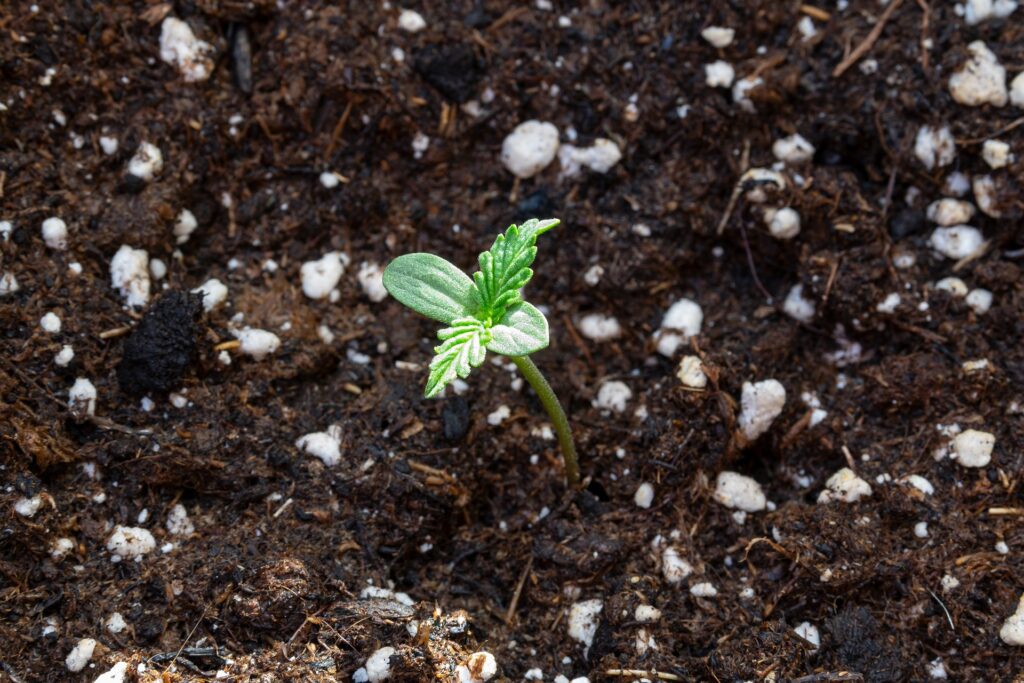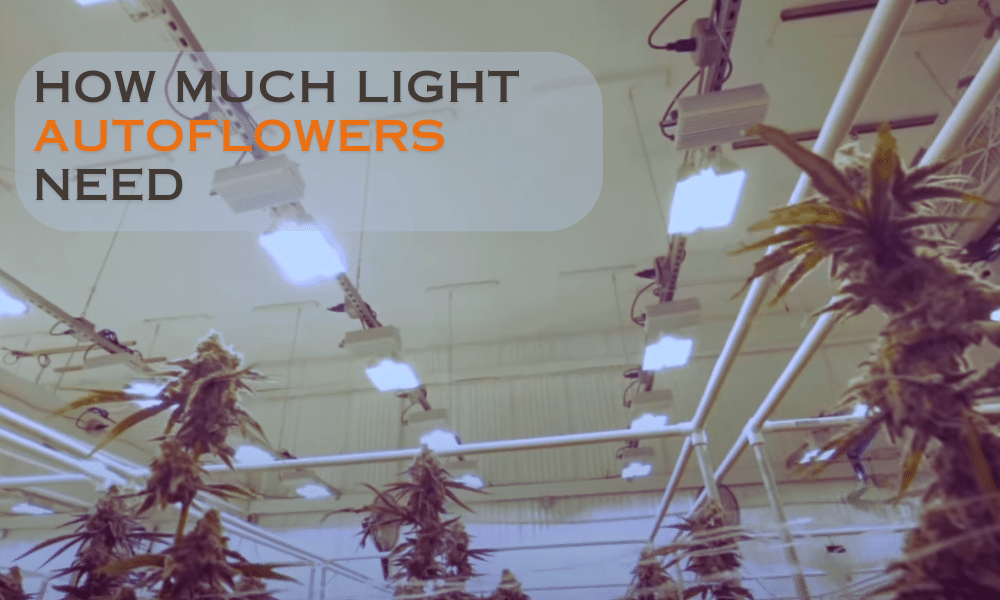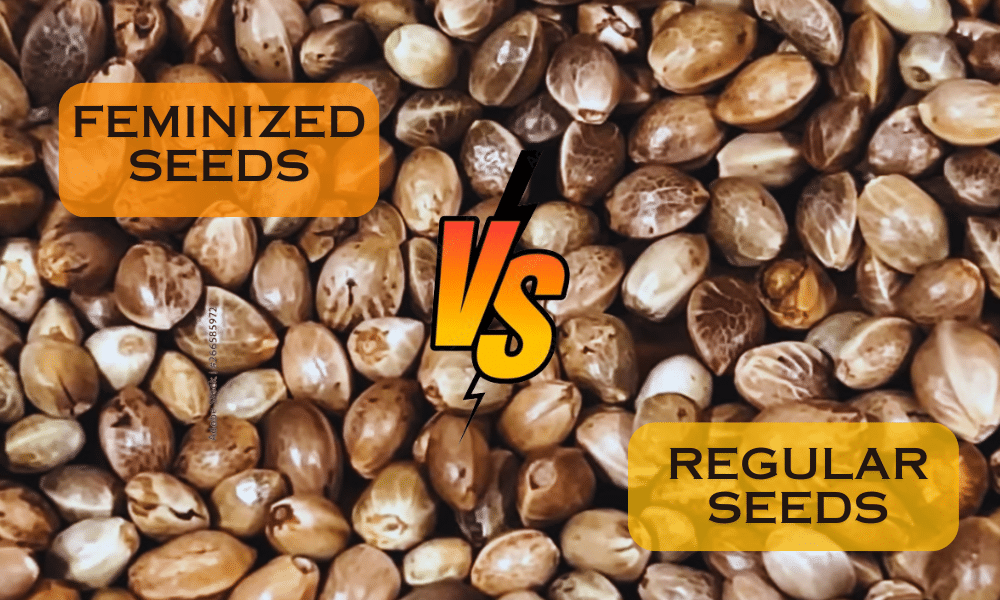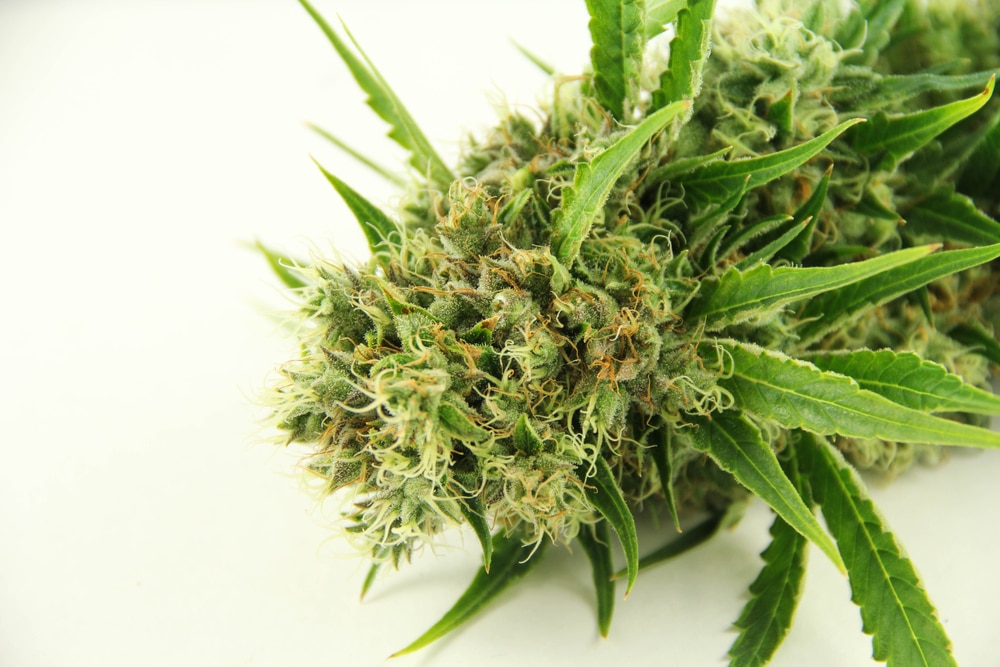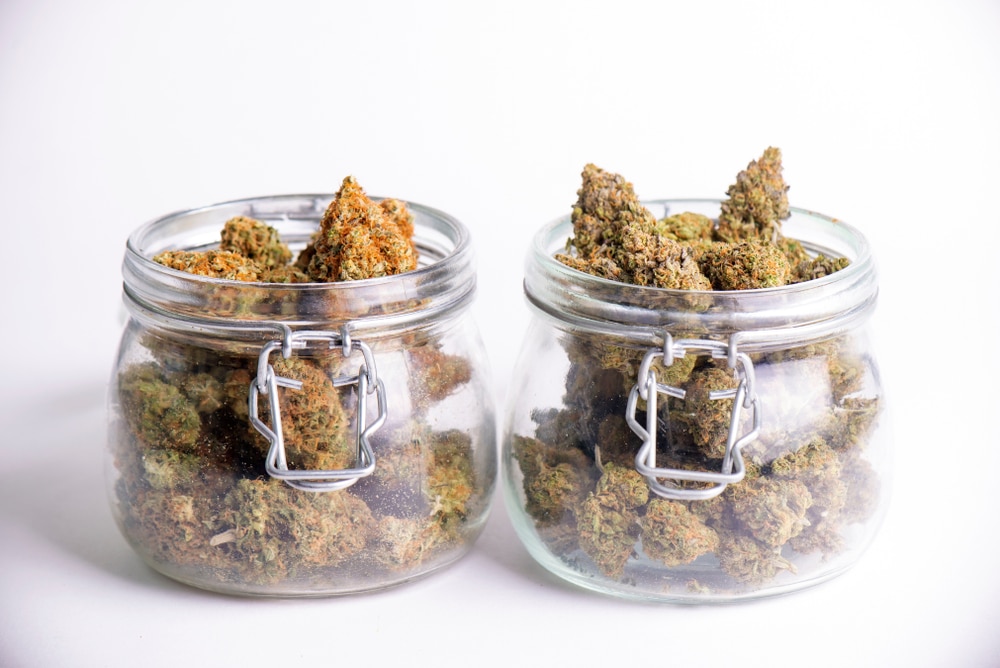No products in the cart.
Marijuana Education
Dealing with Leggy Cannabis Seedlings: Causes, Prevention, and Solutions
Leggy cannabis seedlings can be problematic. But what does it mean for your grow and how can you deal with it?
Legginess is a common issue that many weed seedlings experience as they sprout. It inhibits weed growth and the quality of your yield. As a new cultivator, it’s vital to look out for this problem as you learn the ropes.
Explore various tricks for preventing and fixing leggy marijuana seedlings.
Understanding leggy cannabis seedlings
Before learning various ways to deal with this problem, know how to identify a leggy cannabis seedling and its possible causes.
What are leggy cannabis seedlings?
A cannabis seedling is said to be leggy if it grows skinny, tall, and spindly. The plant looks bare and grows in the direction toward the light source.
As the seedling sprouts vertically, it becomes heavy at the top but lacks enough strength to support the weight. The disproportionate growth affects the root and makes the plant fall over.
Note that there’s no specific height your cannabis seedling must reach to become leggy. To determine legginess, compare your plants to other healthy seedlings of the same strain in the right conditions. If your seedling looks significantly taller than others, it may have a problem.
The impact of leggy seedlings on plant growth
During the seedling stage, a healthy cannabis plant focuses its energy on creating strong and thick stems. When it’s leggy, it concentrates on growing tall without developing sturdy leaves and body parts.
As a result, the most notable effects of legginess on weed seedlings are thinness, weakness, and fragility. The plants cannot accommodate their top-heavy structure, making them flop over. When dealing with wind and other unfavorable conditions, they may break.
Legginess may make marijuana seedlings appear yellowish or pale. This problem also increases the vulnerability of seedlings to withering or decaying over the soil line.
Causes and prevention of leggy cannabis seedlings
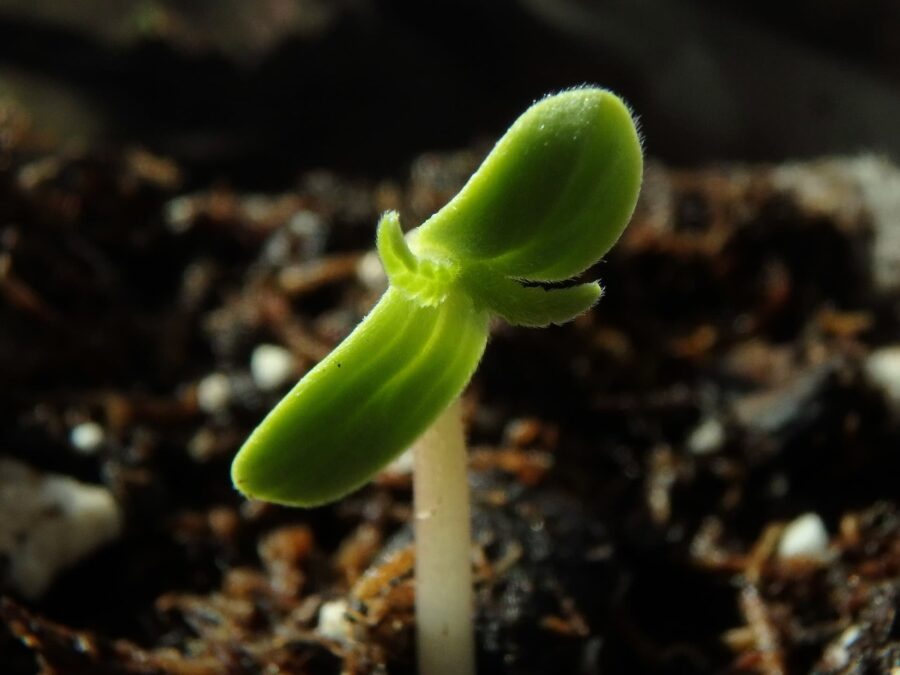
Various factors can lead to leggy cannabis seedlings, and each requires specific solutions. Here are the common causes and prevention methods for this condition.
Insufficient light exposure
Poor light exposure is the primary reason for leggy seedlings as they need a sufficient supply to grow. When the lamp is too far away or not strong enough, young plants respond by growing toward the light direction.
Excess height gain leads to legginess as the seedlings become fragile and thin.
Choosing the right light source
Place your LED lamp about 24–36 inches away from the top of the seedlings. Since the effects of the blue light spectrum aid cannabis growth, focus on using it during this phase.
Adjusting light intensity and duration
If your light intensity is too low or too high, adjust it to fit the requirements of your seedlings. Keep the intensity around 100-300 µmol/m²/s. Implement an 18/6 illumination cycle, allowing the plants to receive light for 18 hours and stay in darkness for 6 hours per day.
High temperature and humidity
High temperatures lead to a growth spurt for cannabis seedlings and cause an unbalanced development in the plant. They stimulate the stems to grow quicker than the leaves and other areas.
The quantity of water vapor in the air around your seedlings affects their growth. Inadequate humidity prevents your young plants from receiving sufficient carbon dioxide and oxygen. This problem results in lankiness and stunted development.
Regulating temperature and humidity levels
Control temperature and humidity levels in your grow room to promote seedling growth. Ensure the temperature is about 70–80°F (21–27°C) and keep the humidity at about 65–80% throughout this stage.
Proper ventilation for seedling growth
Poor ventilation increases moisture and humidity levels, inhibiting the growth of your seedlings and making them look weak and lanky. Prevent this problem by installing extractor fans, carbon filters, and oscillating fans in your tent.
Overcrowding and competition
When you cultivate several seedlings close together in a tight space, they compete for light and other resources. Overcrowding and competition prevent them from getting sufficient illumination and air during this crucial phase.
The plants respond to the problem by growing taller towards the direction of light and becoming leggy.
Adequate spacing for seedling growth
As your seeds grow in individual pots, leave about four inches between them. This trick gives each plant enough room to breathe and develop without competing for light, air, and other resources with others.
Thinning and pruning techniques
Thinning involves the removal of weak cannabis seedlings so that the stronger ones can survive. When implementing this technique, get bonsai shears, disinfect them, and carefully use them to eliminate lanky plants.
Pruning is the removal of dead or unhealthy leaves and branches, allowing the seedlings to grow properly. Remove the dying or dead parts and large stems, as you start the process.
If your setup prevents the branches in the middle of the seedlings from getting sufficient light, cut off the parts.
Corrective measures for leggy cannabis seedlings
Are your seedlings already stretching toward the light source? Although certain corrective measures may fix leggy cannabis seedlings, identifying and solving the problem early plays a key role in saving them.
Repositioning and adjusting light sources
If the light sources are too close to or too intense for your seedlings, don’t hesitate to reposition and adjust them. Leave at least 24 inches between the lamp and your plant canopy, and regulate the illumination to fit the needs of the seedlings.
If the light is too low, add supplemental grow lights to your tent or change the existing one to a more powerful lamp.
Implement proper plant spacing
Are your seedlings too close to each other? It’s time to implement proper spacing. We recommend at least four inches between the seedling pots. If your grow tent is too small for your plants, consider moving them to a bigger container.
Pruning and training techniques
Pruning and training also play a vital role in correcting a leggy cannabis seedling. Implement the tips below:
Topping and fimming
These two techniques aid seedling growth as they allow the young plants to develop properly. Topping involves cutting off the newest sprout at the end of the stem and promoting the development of two new colas and stalks.
As the new parts grow, the growth hormone distributes evenly to different parts of the plant. This technique results in healthy seedling development from top to bottom.
When topping marijuana seedlings, use sterilized blades or scissors to prevent the spread of diseases from one plant to another.
Fimming focuses on removing most of the growth above the main stem. Although it’s similar to topping, it doesn’t require you to remove the whole branch. This technique ensures several new shoots come out from the area you cut.
This pruning method also enables growth hormones to move to different parts of the plant.
Low-stress training (LST)
LST is a technique for manipulating weed plants to grow in the desired direction. The method involves topping, typing, wiring, and bending weed branches to form the specific volume or shape you want.
As this technique controls the growth direction of your crops, it allows light, oxygen, and carbon dioxide to reach all essential parts. While influencing cannabis development, LST may correct legginess.
The Screen of Green (ScrOG) method
This method reduces the height of the upper branches of your plants and raises the lower ones. The Screen of Green (ScrOG) technique encourages a horizontal canopy and ensures light penetrates different parts of the crops.
Attach the screen to the wall in your grow room before lowering it until it reaches the topmost part of the canopy. Make sure it spreads over the plants evenly to encourage horizontal growth.
Combine the ScrOG method with low-stress training for the best effects.
Strengthening weak seedlings
In many cases, you could salvage weak, stretchy seedlings by strengthening them with certain techniques.
Supporting leggy seedlings with stakes
Attaching stakes to leggy cannabis seedlings is one of the reliable ways to reinforce them. Pencils, plastic or bamboo straws, and sticks are affordable and accessible materials to use as stakes.
Position your stakes in a way that allows them to support weak seedlings and make them upright. Be gentle as you strengthen the seedlings so that you don’t damage them.
As the plants recover, adjust your stakes to provide continuous support.
Encouraging root development
Roots absorb nutrients and water from the growing medium and serve as the platform on which marijuana plants develop. When roots are in good condition, they promote the even distribution of vitamins and support weak seedlings.
Encourage root development by cultivating weak seedlings in a hydroponic medium. This system means you grow your cannabis seedlings in a water-based solution like coconut coir, perlite, and vermiculite.
Another way to promote root development is the introduction of beneficial microbes. These are bacteria and fungi stimulating root growth and improving overall plant health.
Boosting seedling health and nutrient supplements
Nitrogen, phosphorus, and potassium are the three primary nutrient sources for cannabis plants. Supply these materials to your leggy weed seedlings as their availability can reinforce the crops to survive.
Calcium, zinc, magnesium, manganese, and sulfur also aid the recovery of weak seedlings.
Transplanting leggy cannabis seedlings
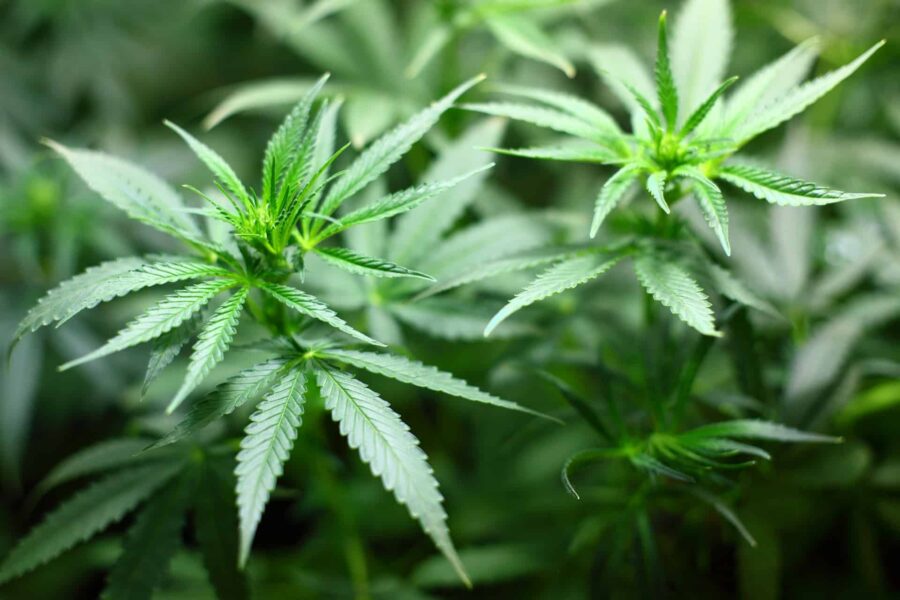
- #image_title
If your leggy marijuana seedlings are already mature, consider transplanting them as it may fix the problem. This solution strengthens your seedlings and motivates them to move into the vegetative phase.
Deep transplanting techniques for leggy seedlings
When moving leggy weed seedlings from one medium to another, implement deep transplanting techniques. Let soil occupy about 50% of a new pot and gently place your seedlings in it. Allow their roots to go more than 2 cm into the soil so that they can easily and quickly start growing.
Water your plants and provide nutrients regularly to promote growth.
Ensuring a smooth transition during transplantation
As you transplant cannabis seedlings, move them as quickly as possible. This trick is to make sure the young plants don’t stay outside of the growing medium for up to one hour. It’s also critical to handle the crops with care throughout the process.
Monitoring seedling recovery post-transplant
Don’t assume your work is done after transplanting weak cannabis seedlings. In many situations, the young plants may experience transplant shock, a condition that causes drooping, withering, and discoloration.
Keep an eye on the seedlings to note how they recover from the problem. Provide adequate post-transplant care as you monitor the plants.
Preventing leggy seedlings in future grows
Although there are ways to manage leggy weed seedlings, the solutions don’t guarantee full recovery from the condition. Be proactive to prevent the problem in future grows.
Consistently monitoring environmental conditions
Cannabis seedling growth depends on the temperatures, humidity, soil pH, and other environmental conditions around the young plants. Observe these vital factors regularly to diagnose any possible issues that can be detrimental to your crops.
If you notice any problems with the environmental conditions of your grow room, correct them immediately.
Implementing proper cultivation practices
Cannabis cultivation can be challenging, especially if you’re new to the process. Implement the following practices to grow seedlings and prevent legginess:
- Have a proper plan for lighting
- Manage your grow room for optimal results
- Know and implement the right weather conditions and growing climate for cannabis
- Determine the ideal medium or soil for cannabis growth
- Optimize humidity and temperatures for your seedlings
- Master different training techniques and implement them accordingly
- Supply nutrients and water when necessary
As you follow these tips, continue learning about how to grow cannabis and deal with different issues, like legginess.
Selecting suitable cannabis strains
Regardless of the efforts you put into preventing leggy marijuana seedlings, some strains are more susceptible to the problem than others. Choose exotic cannabis seeds with a low risk of legginess and other related issues.
Grow healthy cannabis seedlings
Legginess is a common menace for cannabis seedlings. Proactively prevent this issue by sticking to the proven tips above. If your young plants are experiencing this problem already, use various tricks to help them recover.
As you strive to save your leggy seedlings, understand that some of them may not recuperate. If your plants don’t respond to all treatments, it may be time to remove them and start all over.
Are you ready to cultivate healthy cannabis plants? Get our healthy, high-yielding marijuana seeds now and grow them without any hassle.


